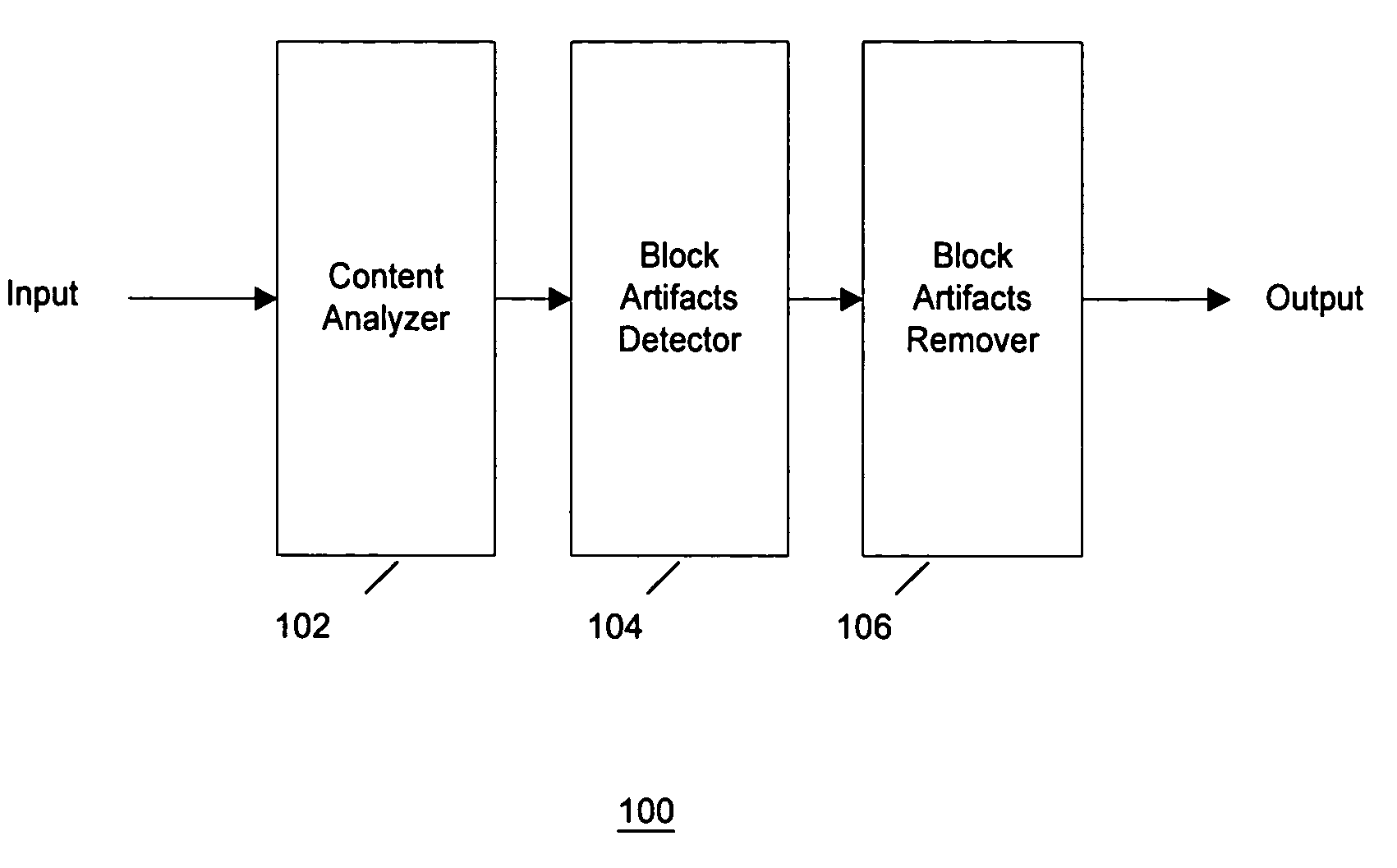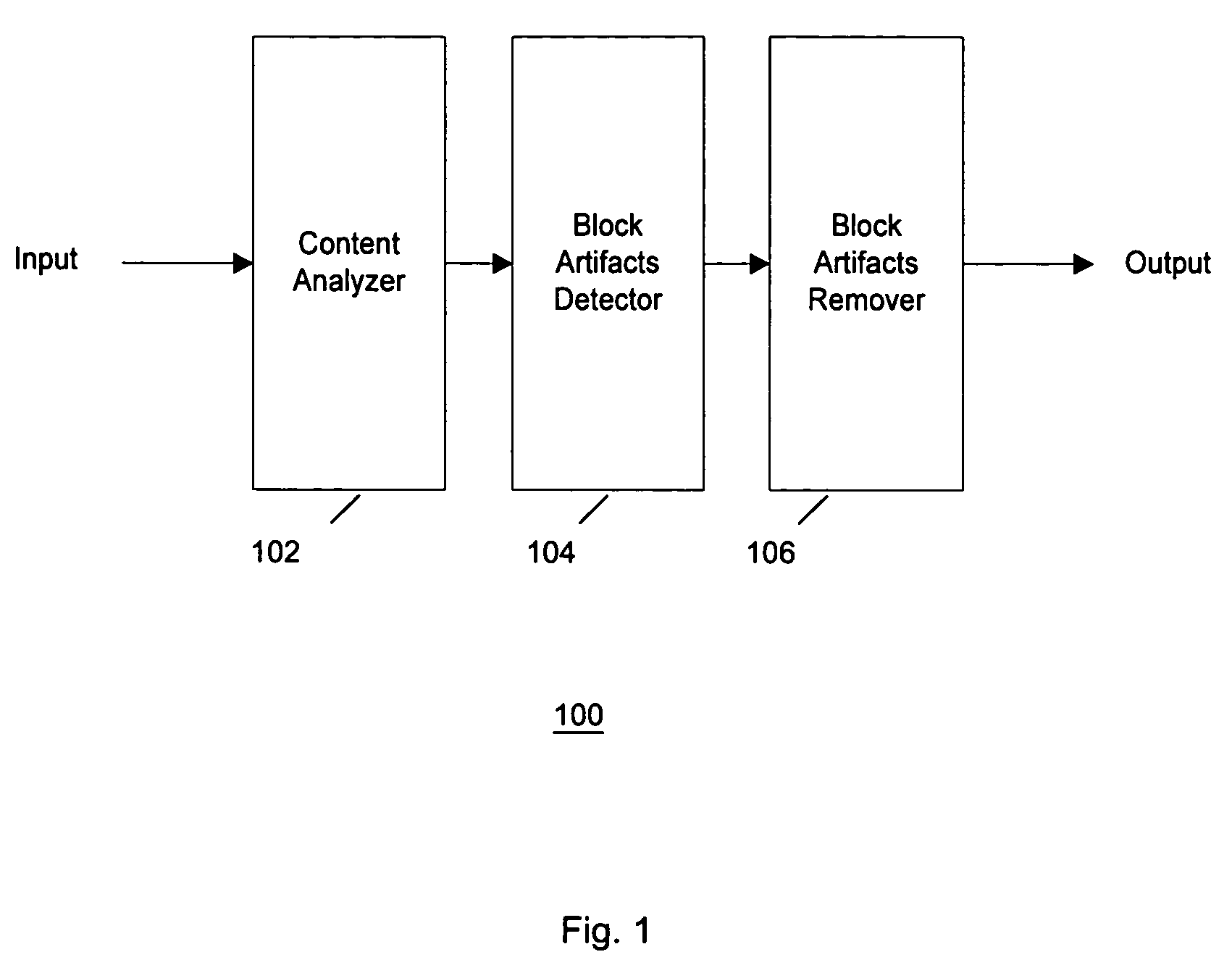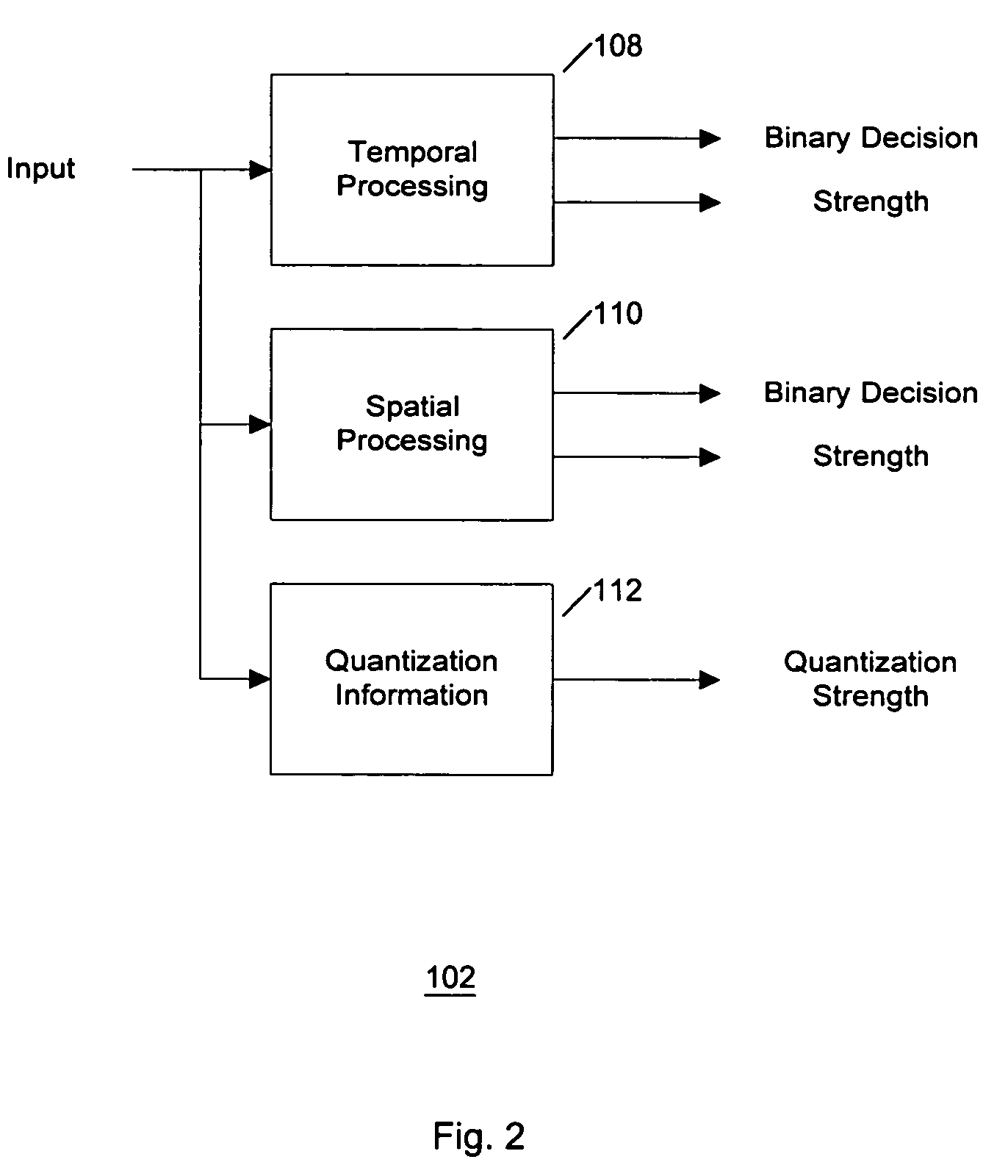Content-adaptive block artifact removal in spatial domain
a content-adaptive block artifact and spatial domain technology, applied in the field of noise reduction/removal of block artifacts, can solve the problems of deteriorating affecting the quality of displayed video images, and often losing the critical high-frequency portion of image/video data that connects neighboring blocks, etc., to achieve the effect of reducing/removing block artifacts in compressed/coded image/video
- Summary
- Abstract
- Description
- Claims
- Application Information
AI Technical Summary
Benefits of technology
Problems solved by technology
Method used
Image
Examples
Embodiment Construction
[0018]Video compression refers to decreasing the amount of data (e.g., number of bits per second), that represents a video signal by exploiting spatiotemporal and statistical redundancy within the video signal. Examples of such compression techniques include Motion-JPEG, MPEG, H.26x, AVI, etc., wherein the degree of compression of digital video is represented by a range of measurable parameters, such as compression rates. Digital video includes a sequence of images, or video, generated by e.g. sampling and quantization applied to analog video signals.
[0019]Digital images and videos that are compressed by block-based compression techniques (JPEG, MPEG, H.26x) suffer from various MPEG noises, including block artifacts. Block artifacts are defined as undesired superfluous edges at the block boundaries. These edges are not part of real image features and must be removed in order to improve the visual quality of the picture. It is desirable to provide a simple and inexpensive device / meth...
PUM
 Login to View More
Login to View More Abstract
Description
Claims
Application Information
 Login to View More
Login to View More - R&D
- Intellectual Property
- Life Sciences
- Materials
- Tech Scout
- Unparalleled Data Quality
- Higher Quality Content
- 60% Fewer Hallucinations
Browse by: Latest US Patents, China's latest patents, Technical Efficacy Thesaurus, Application Domain, Technology Topic, Popular Technical Reports.
© 2025 PatSnap. All rights reserved.Legal|Privacy policy|Modern Slavery Act Transparency Statement|Sitemap|About US| Contact US: help@patsnap.com



